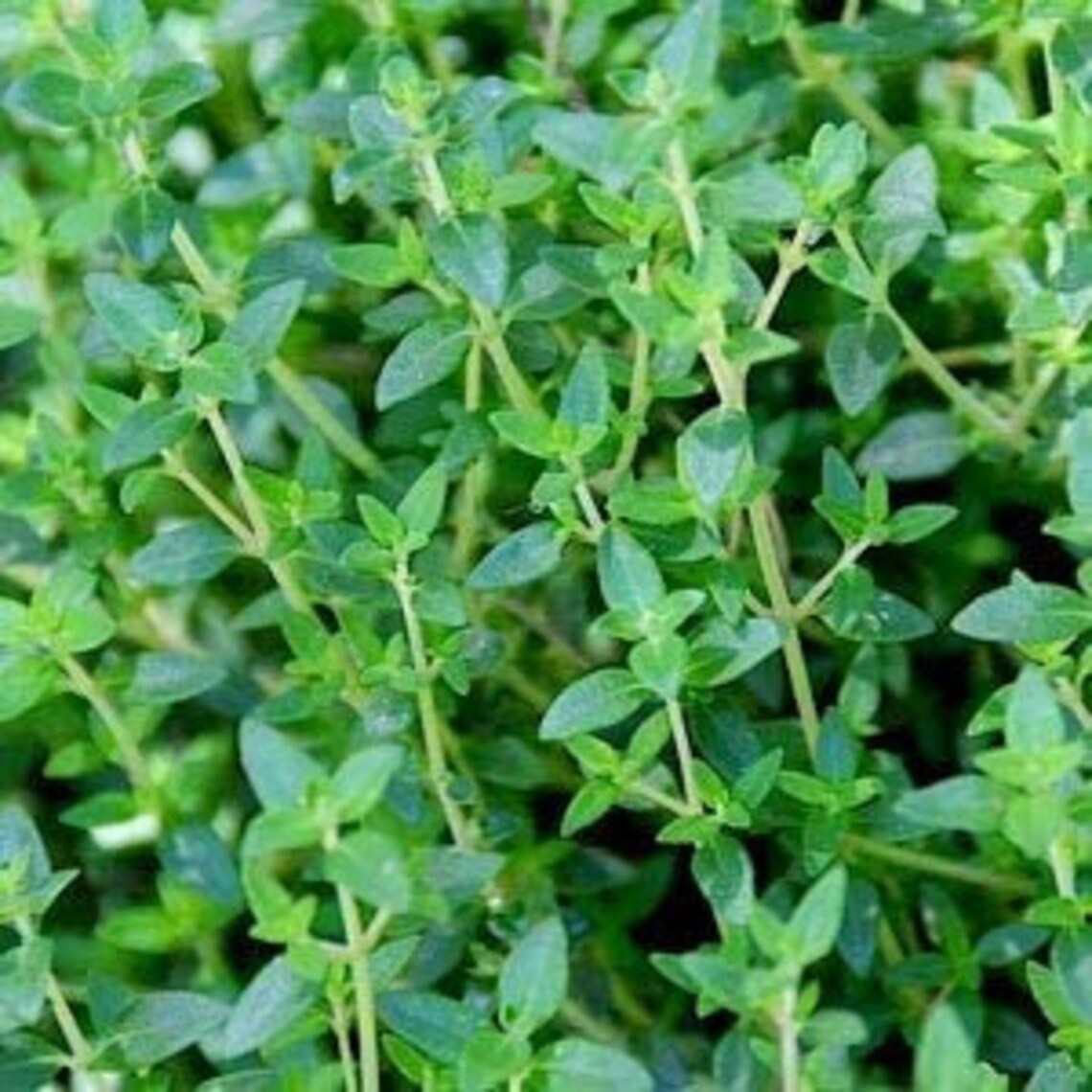
To best fight root rot in herbs, look for an organic or garden-safe fungicide, like Neem Oil. You can prevent botrytis by allowing the plant to dry out between waterings, allowing for good airflow in your greenhouse, and spacing to allow the sun to penetrate to the soil level. Botrytis grey rot is usually associated with wet or humid conditions. If the plant sits in moist soil for an extended amount of time, you could end up with root rot, botrytis or a bacterial blight. Thyme English is not prone to many diseases, but don't oversaturate the soil. Whiteflies, aphids, and occasionally mealybugs are all insects to watch out for with Thyme English. Plant growth regulators are not recommended on herbs. We do not recommend planting Thyme English in 1801 or other traditional market trays as they tend to get leggy and have the potential for fungus problems when planted too close together. Space 4-inch, 6-inch, and gallon pots as needed to allow air flow and penetration of light between plants. Growing herbs at cooler temperatures will help to keep the plants short and bushy. We recommend that you pinch Thyme English 5-10 days after transplanting to your final container. In most cases, an additional supplement of iron is recommended in order to deepen the coloration of the foliage. A pH between 5.8 and 6.2 is important for the healthiest plant color. General Growing Tips For Your Rooted Cutting Linerįor best results with Thyme English, use a constant feed program of 150-200 ppm N on well rooted plants.

#ENGLISH THYME HOW TO#
How to Sell More Houseplants (6 min read).Grow thyme as a container product or in 4 inch pots for landscape use. The herb commonly known as thyme is widely used for its aroma, flavor, and visual appeal in both culinary and ornamental applications. Our Thyme English Liners are well-rooted starter plants that come ready to transplant into your final container.


 0 kommentar(er)
0 kommentar(er)
